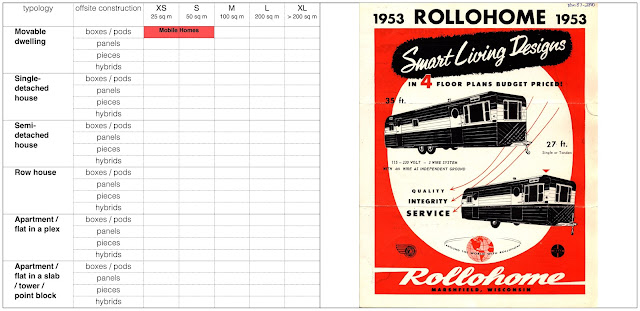The ability to carry a home to any setting according to basic needs, employment opportunities, economic challenges, for leisure or simply to respond to a transient lifestyle is an enduring vernacular in architecture. Rational dimensions and ease of assembly/disassembly matters when it comes to moveable dwellings. Freedom will always be dependent on lugging capacity, trail accessibility and material constraints.
The trailer home is the icon of movability and minimal dwelling aspirations. As early twentieth century automobile manufacturing improved, it inspired many to use this newfound affordable mobility to envision hitching houses to Henry Ford’s assembly line principles.
Pioneer Arthur Sherman first built a box timber-frame trailer for a family camping trip in the early 1930s. The 3-meter long x 1.8-meter wide no frills volume included sleeping bunks, a coal burning stove and a rear trap door to reveal an exterior kitchen increasing livability. Sherman’s trailers became so popular that the simple camping unit became the sustaining product of a prosperous 3-million-dollar company by 1936 selling 6000 box trailers. The mobile home is still one of the most successful products of industrialized housing. Manufacturing on a portable foundation, a steel skeleton, is certainly an intelligent way of travelling but is also a manufacturing «coup de génie» as the product moves around the workshop on a stable, working surface. Whether produced on a linear line or in a cellular production process, once finished, the house is simply hitched and carried away.
Both conventional factory-built mobile homes and homemade tiny house trailers can afford luxuries found in permanent housing including push-out spaces, fully functional kitchens and even second story spaces. Some contemporary models are veritable rolling villas that have little to do with the liberties associated with XS dwellings.
From Sherman’s modest solution for leisure to subsequent 10’ wide and 12’ wide evolutions proposed by another pioneer Elmer Frey, the mobile home is a testament to the American speculator exploring opportunities and valuing housing as non-site-specific commodity; a conceptualization that has led to negative subtexts at odds with a longstanding architectural position of dwellings’ necessary anchorage to the spirit of a place.
 |
| The Rollohome movable dwelling as an example of XS-S dwellings |
No comments:
Post a Comment